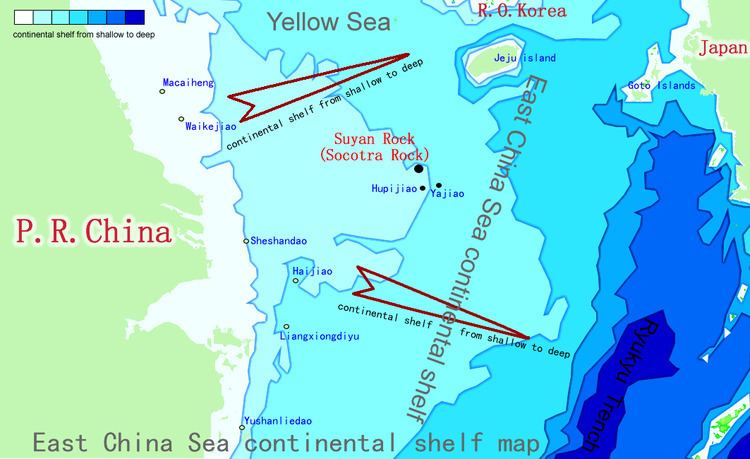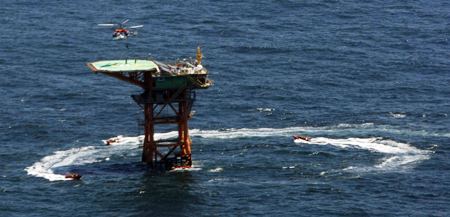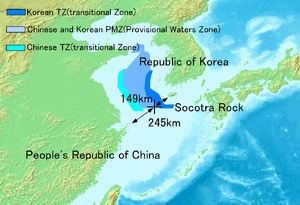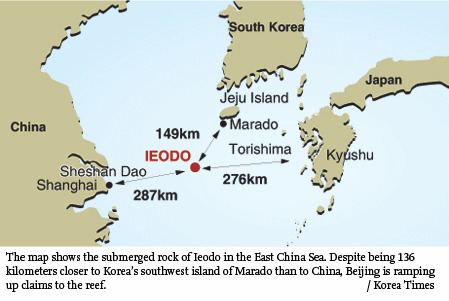Summit depth 4.6m | Location Yellow Sea | |
Translation Ieodo or Iŏdo (이어도/離於島)
Parangdo or P'arangdo (파랑도/波浪島)
Suyan Rock (苏岩礁)
Sogan Rock (蘇岩礁) | ||
Suyan rock socotra rock torishima ieodo i do parangdo p arangdo
Socotra Rock, also known as Ieodo (Hangul: 이어도; Hanja: 離於島; MR: Iŏdo) or sometimes Parangdo (Hangul: 파랑도; Hanja: 波浪島; MR: P'arangdo), is a submerged rock 4.6 metres (15 ft) below sea level (at low tide) located in the Yellow Sea. International maritime law stipulates that a submerged rock outside of a nation's territorial sea (generally 12 nautical miles) can not be claimed as territory by any nation. However, the rock is the subject of a maritime dispute between South Korea, China and even Japan, which considers it to lie within its exclusive economic zone. And China refers to it as Suyan Rock (Chinese: 苏岩礁; pinyin: sūyánjiāo),which means the rock(岩,yán) or reef(礁,jiāo) outside the coastal waters of Jiangsu (苏,sū,the abbreviation), while Japan refers it as the same name in Chinese character. In fact, both China and Japan use Suyan/Sogan Islet for its English name.
Contents

The rock is located 149 kilometres (80 nmi; 93 mi) southwest of Marado (just off Jeju island) in Korea. For China, Yushan Island of Zhejiang, is 287 km (178 mi) away from the rock. The rock serves as the foundation for Korean Ieodo Ocean Research Station. A Korean helipad is also located there to allow the research station to be serviced.

History

Both "Parangdo" and "Ieodo" are names for the mythical island which the residents of Jeju island believed housed the spirits of fishermen who perished at sea. The South Korean government has asserted a direct connection between these legends and the modern-day rock, claiming that the traditional saying that "One who sees Parangdo would never return" refers to the danger facing sailors when high waves allow the rock to break the surface. Koreans even name the studies about Ieodo as "Ieodology". Socotra Rock's Korean name was officially designated as "Ieodo" on 26 January 2001, by the Korea Institute of Geology.
Timeline

Dispute

According to the United Nations Convention on the Law of the Sea, a submerged reef can not be claimed as territory by any country. However, China and South Korea dispute which is entitled to claim it as part of the Exclusive Economic Zone (EEZ).

In September 2006, the Chinese Foreign Ministry spokesman Qin Gang (秦刚) told reporters that China objects to South Korea's "unilateral" activities in the region, referring to Korean science observation facilities on this reef island, which the Chinese Foreign Ministry spokesman has claimed to be "illegal". However, Chinese reports notes that Qin Gang said the two countries never had a "territorial dispute", not mentioning any islands. In 2013, the PRC clarified their position by stating that China had no dispute with Korea on the issue.
